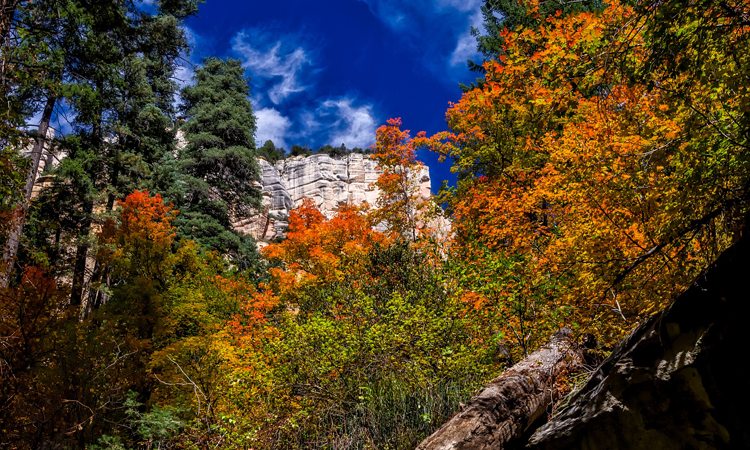Salt River Project’s Board of Directors has approved a $400,000 contribution to The Nature Conservancy in Arizona to support forest restoration on the Verde River watershed. The SRP contribution, to be paid over four years, will support The Nature Conservancy’s Future Forests Project.
Launched recently by The Nature Conservancy and the U.S. Forest Service to transform the way forests are managed, the Future Forests Project will also create skilled jobs and attract new investment by creating a reliable flow of wood that supports rural economies.
Bruce Hallin, SRP’s director of Water Supply, said SRP’s contribution to the Future Forests Project will support restoring 20,000 acres of forested land.
“Forests in northern Arizona are the lifeblood of SRP’s water supply, as the runoff from rain and snow that falls on those forests flows downstream to fill reservoirs on the Salt and Verde rivers.” said Hallin. “Arizona’s forests are unhealthy and overgrown, and without action, more catastrophic wildfires are almost a certainty. When those forests are healthy, they protect the ecosystems and hydrology of the watersheds, ensuring that water flowing into reservoirs is clean and relatively free of sediment.”
Hallin said SRP is working with numerous groups, including The Nature Conservancy, the U.S. Forest Service, the Arizona Commerce Authority, the state Forestry Department and private industry, to seek joint solutions such as the removal of excess small-diameter trees and brush that overcrowd today’s forests.
SRP, which has been at the forefront of the push for healthy forests and watersheds, will be working with The Nature Conservancy and the U.S. Forest Service on the Future Forests Project. The partners will share costs on this new approach. They will take into account the number of acres thinned and results from mapping technology that provides a faster and cheaper restoration guide.
“The Future Forests Project is about thinking differently and changing the status quo,” said Patrick Graham, state director of The Nature Conservancy’s Arizona chapter. “Working together, we’re going to champion strategic partnerships, deploy innovative technology and introduce new business practices to modernize the way we restore forest health and advance conservation at a pace and scale that is needed.”
Graham said The Nature Conservancy is working with Campbell Global, which brings more than three decades of experience and leadership to sustainable timberland and natural resource investment management.
The Future Forests Project has launched a 20,000-acre thinning project in the Kaibab and Coconino National Forests near Flagstaff. Graham said the first Future Forests Project will become a living lab where a team will document improvements and savings that can then be transferred to other Nature Conservancy chapters, catalyzing change across the West.
David Rousseau, Salt River Project’s president and its representative on The Nature Conservancy’s board, said both organizations share the same opinion that Arizona’s forests are clearly critical to the Valley and state’s water future.
“SRP and The Nature Conservancy are both active in forest restoration on the Verde River watershed,” said Rousseau, “and this contribution to the Future Forests Project will help support the effort to increase the scale of restoration of this watershed area at such a critical time.”




